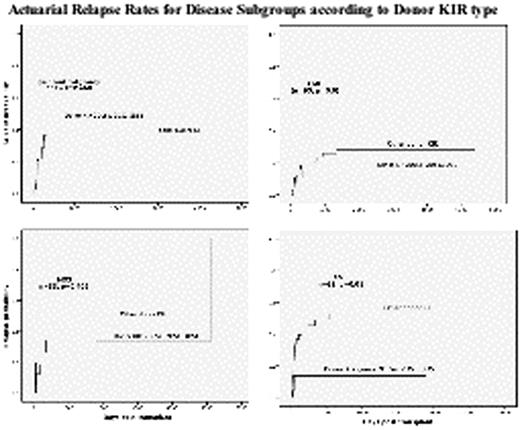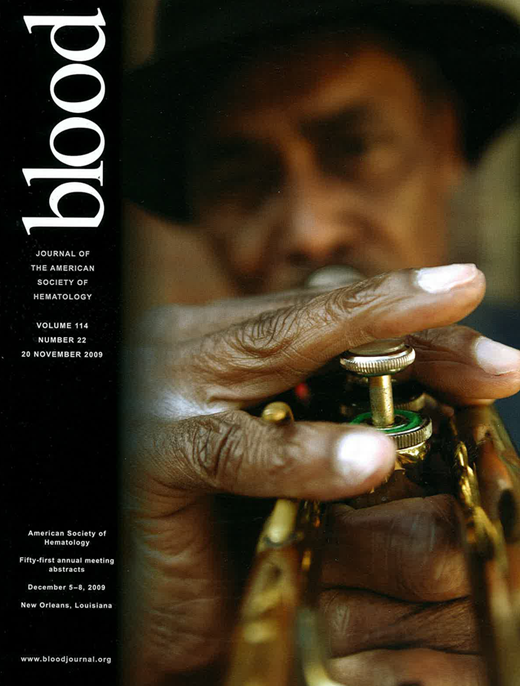Abstract
Abstract 2282
Poster Board II-259
Stem cell transplantation (SCT) from a healthy donor can be curative for patients with haematological malignancies resistant to other treatments. Elimination of malignant cells through a graft-versus-leukaemia (GVL) effect involves donor T- and NK-cells but their relative contribution to this process is poorly defined. NK-cell alloreactivity and GVL effects are controlled by the nature of the interaction of NK activation receptors and killer-immunoglobulin-like-receptors (KIR) with major-histocompatibility locus class I antigens on thetarget cell. We performed KIR-genotyping of HLA-matched donors in two hundred and forty eight T-celldepleted SCTs to identify genetic factors affectingtransplant outcome (transplant-related mortality (TRM), leukaemic relapse and survival). Transplant-related factors and donor KIRgenotyping significant in univariate analysis were entered into a multivariateanalysis to identify independent variables predictive of outcome for differentforms of leukaemia.
Patients studied were transplanted at a single center between 1993-2008.They included 70 AML, 99 CML, 40 ALL, 39 MDS patients and 13 patients with CLL, NHL or Myeloma. Median age was 36 years (range 9-66). All received aT cell depleted SCT from an HLA identical sibling. Patients were conditioned with totalbody irradiation 12-13.5Gy (4Gy for patients over 55y) and cyclophosphamide120mg/kg +/- fludarabine 125mg/m2. Patients received 0.2-5 × 10 5 CD3 cells /kg and amedian CD34 cell dose of 3 × 10 6/kg. Cyclosporine was used as the sole GVHDprophylaxis.
Multivariate analysis confirmed known predictive factors; for survival: highCD34 cell dose(RR 0.51, p <0.001) and standard rather than high risk disease (RR 3.1, p <0.001), for TRM: poor lymphocyte recovery at day 30 (RR 0.4, p < 0.02), for relapse: high risk disease (RR 4.65, p<0.002). In addition, the presence of donor B haplotype KIR genes: 2DL5A, 2DS1 and 3DS1was associated with significantly less relapse in patients with AML (13% vs 57% ) but not inpatients with other myeloid or lymphoid malignancies. AMLpatients receiving SCT from donors with these KIR genesspan style=“font-size: 10pt;”>relapsed five times less frequently than patientstransplanted from donors with other KIR genotypes.No other factors relating to NK alloreactivity including (missing donor KIR ligand, presence of donor haplotype B, total number of inhibitory KIR and total number of activatory KIR) was foundto be predictive for transplant outcomes. Thesefindings suggest specific, genetically determined,interactions between NK-cells and AML cells whichfacilitate the graft-versus-leukaemia effect and haveimplications for donor selection for AML patients.
No relevant conflicts of interest to declare.
Author notes
Asterisk with author names denotes non-ASH members.


